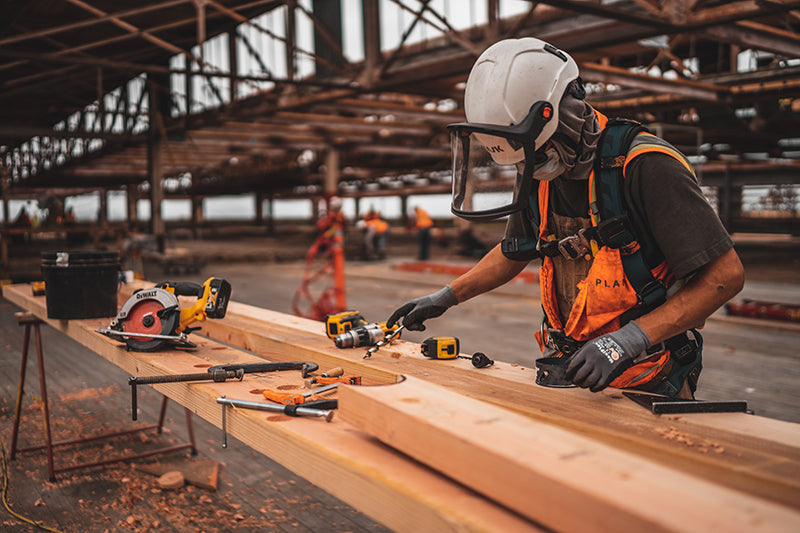Firstly, let’s highlight some of the key considerations when choosing the best construction generator and then delve a little deeper into each one. Depending on whether your project is taking place in a remote area with no power source or built-up community, you will need to think about noise, fuel tank size (and therefore runtime), the number of power outlets required, and, most importantly, wattage.
Type of Generator Required:
High-Powered:
Required at large-scale construction sites with huge amounts of power up to 2500kw. These might be used for big property development projects or road building and may be required to power worker accommodation with kitchen appliances, lighting, and laptops.
Medium-Powered:
Used in smaller building projects to power tools such as drills, circular saws, or concrete mixers. Wattage sits around the 5kw to 200kw range.
Standby Generators:
These provide back-up when a main jobsite generator fails so that a project can continue whilst maintenance or repair work is carried out.
Portable Generators:
These are primarily used on small jobs or when a construction site is spread out and multiple smaller generators are required. Based on wheels, these can be transported easily to where they are needed.
If any of these sound exactly like what you’re looking for, check out our range of generators for construction sites, each with a 3-year guarantee for peace of mind.
5 considerations for the best jobsite generators:

1. Fuel and Runtime:
Fuel-type and tank size are going to be key components in figuring out how long your generator will run without re-fuelling. Generators can be powered by diesel, petrol, or gas and large, static, high-powered generators will give you the longest runtime.
With portable generators, a small tank may leave you out of power halfway through the day – not ideal when there are no power outlets in sight. Always check the approximate runtime of your generator before purchasing and make sure it suits your needs.
2. Wattage:
The next consideration is around wattage and the size of generator you require. Work out the wattage needs of each piece of equipment you’ll be using and then you’ll be able to choose the generator that suits your power requirements.
Our wattage calculator can help you do this quickly and effectively.
3. Noise:
If you’re working on a small-scale house or shop renovation, it’s wise to consider disruption to the neighbours and surrounding businesses. For example, solar-powered generators are less noisy, but more expensive, and some modern-day fuel generators can be as quiet as a vacuum cleaner.
Try find a place for your generator that doesn’t cause noise pollution if you’re going to be using it all day.
4. Power Outlets:
Check the number of power outlets on your generator – are there enough for your key appliances or do you need more than one generator to power multiple pieces of equipment in different areas?
5. Tyres:
Portable generators are generally either built directly onto tyres or sitting on a chassis with tyres. This allows you to comfortably move the generator throughout the day, if needed. Check the quality of those tyres and opt for aluminium over plastic if you are working outdoors in a rugged landscape.
Finding the best generator for construction sites:
We have a wide range of durable construction site generators with low running costs and long run times, designed to give you all the power you need on-site without any of the hassle. It’s never been easier to get your construction generator and get to work.
Need some help choosing a generator? Find out all you need to know in our Generator Guides and Tips section.


